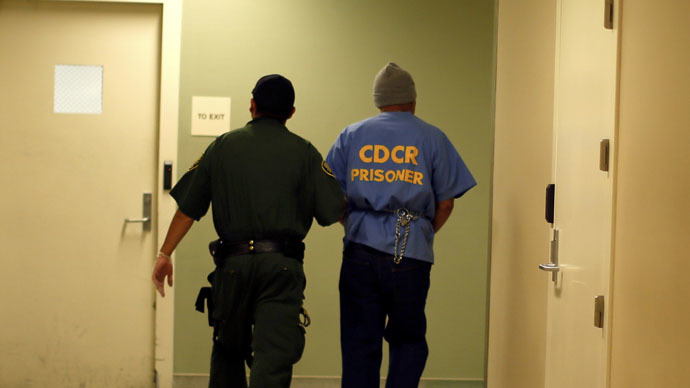Bill approving nitrogen gas executions advances in Oklahoma Senate

Oklahoma lawmakers are pushing for the state to become the first to allow the use of nitrogen gas as a back-up method to execute death row prisoners. The bill passed the state Senate Judiciary Committee and will now head to the floor for a vote.
READ MORE:Oklahoma considering ‘efficient’ gas chambers for executions
Oklahoma lawmakers are pushing for the state to become the first to allow the use of nitrogen gas as a back-up method to execute death row prisoners. The bill passed the state Senate Judiciary Committee and will now head to the floor for a vote.
The Committee voted 8-0 on Tuesday to move forward with a House-passed measure that would grant the use of nitrogen gas in executions. Under the bill, lethal injection would remain the state’s primary method of execution, but using a gas chamber would be an alternative should lethal injection be declared unconstitutional or the drugs become unavailable.
...suffocating prisoners in a gas chamber..."Oklahoma votes to execute prisoners by asphyxiation with nitrogen" http://t.co/Tw0DYBWoYw
— mary #NotNational (@maryteatowel) March 18, 2015
Last year, Oklahoma State Rep. Mike Christian (R) introduced a bill making death by firing squad an alternative for the state. Under current Oklahoma law, electrocution is the second option, followed by firing squad. Christian’s bill would make electrocution the third option, following death by firing squad.
Christian said that unlike traditional gas chambers that used drugs like cyanide, which cause a build-up of carbon dioxide in the blood, breathing nitrogen would be a painless death because it leads to hypoxia – a gradual lack of oxygen in the blood, similar to what can happen to pilots at high altitudes.
READ MORE:Trade group wants pharmacists to stop making lethal injection drugs – report
Execution via “nitrogen hypoxia” is a method advanced in the National Law Review paper in 2005 by Stuart A. Creque, which is seemingly based on the fatal outcomes of two chemical accidents involving nitrogen. There do not seem to be any instances of nitrogen having being used in executions to date.
The search for alternative methods for executions comes during an upheaval in the manufacture of the drugs. A decade-old ban in the European Union prohibits EU nations from exporting execution drugs, and the subsequent shortage that it spawned in the US has prompted prison officials to seek out compounding pharmacists to mix and develop new sorts of cocktails to carry out death sentences.
Oklahoma bill to allow nitrogen gas in executions approved without debate: The current execution chamber at th... http://t.co/cXm8K1VF0o
— gas.com (@gasdotcom) March 24, 2015
Compounding pharmacists who are members of the International Academy of Compounding Pharmacists (IACP) are now being urged to stop working with drugs that are used to carry out executions.
“We have concerns about what may occur,” IACP chief executive David Miller told The Wall Street Journal.
Three executions remain on hold as Oklahoma’s three drug cocktail is under review with the Supreme Court, which will determine whether the policy violates the Eighth Amendment protection against cruel and unusual punishment.
The inmates involved in the suit said that sedative midazolam, often used as part of a three-drug injection cocktail, is not strong enough to make inmates completely unconscious and protect them from pain.
READ MORE:Supreme Court to review Oklahoma execution procedure after botched lethal injection
The lawsuit was originally filed by four inmates, but one of the men – Charles Warner – was executed on January 15 after justices voted 5-4 to allow the lethal injection to proceed.
During that execution, Warner declared that his “body was on fire” and that “no one should go through this.” The lethal injection process took about 18 minutes to complete – longer than is typical for this type of procedure – though he did not show physical signs of pain. Some witnesses said the back of Warner’s neck twitched for about seven minutes before he died.
Warner was convicted of raping and murdering an infant in 1997.












